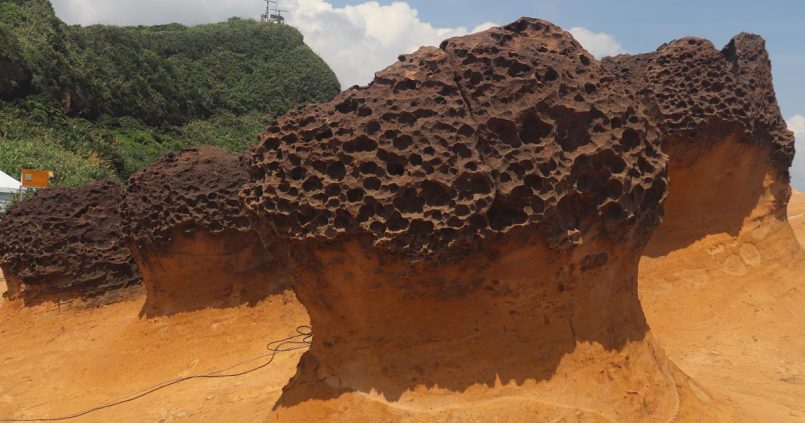I decided to do a solo trip to northern Taiwan, basing myself in the center of Taipei, the nation’s capital. I traveled during the last week of June, as it is a quiet time for my business, being the end of the financial year for my clients.
I traveled solo because my son’s school started to get annoyed with me for talking him out of school for international holidays, LOL.
Taiwan has had three prominent rulers over the last 130 years. In 1895, Japan took over ownership of the island; then, China came into play at the end of the Second World War (1945). Four years later, the ROC government relocated to Taiwan in 1949 while fighting a civil war with the Chinese Communist Party. Since then, the ROC has exercised jurisdiction over the main island of Taiwan and several outlying islands, leaving Taiwan and China under the rule of a different government.
Ximending Walking Street
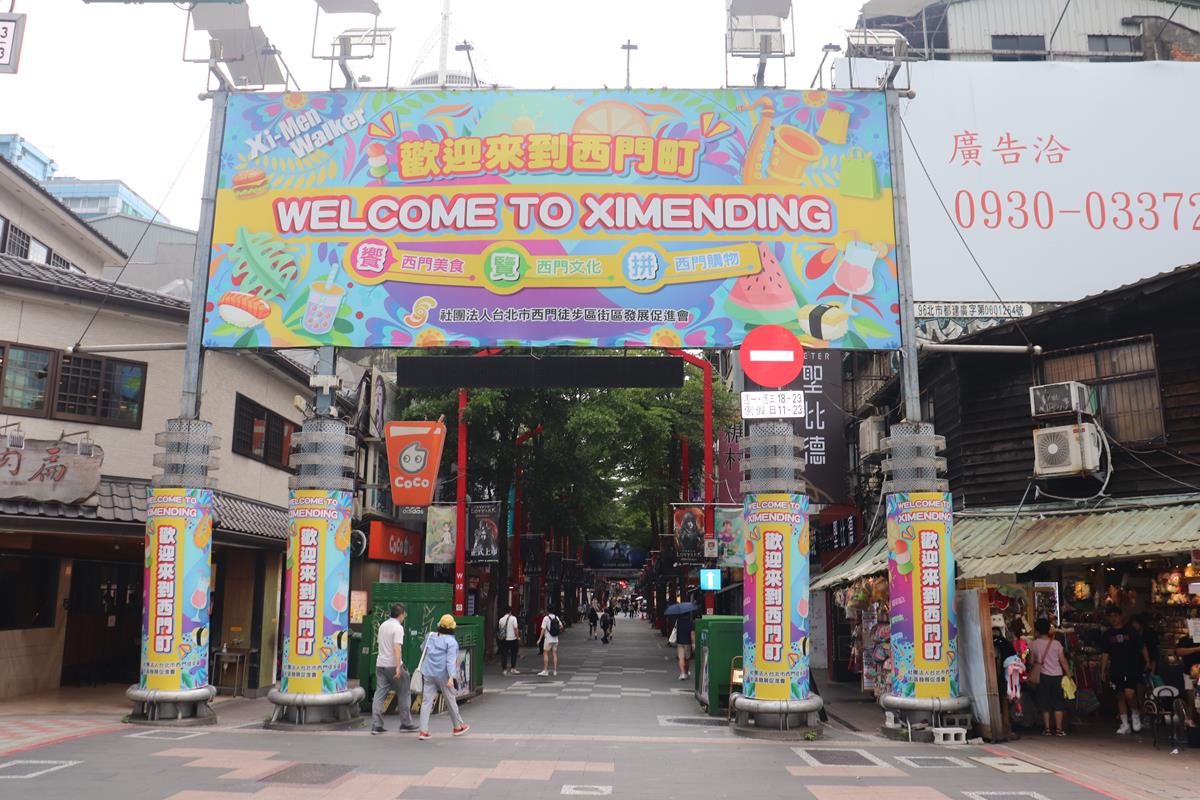
Located southwest of the CBD, Ximending Walking Street is famous for the young and young at heart. Here, you will find a vibrant walking district full of clothing shops, restaurants, cafes, souvenir shops, and theatres. While Ximending Walking Street is primarily a pedestrian area, it’s important to remain cautious as vehicles traverse the streets.
Taipei 101
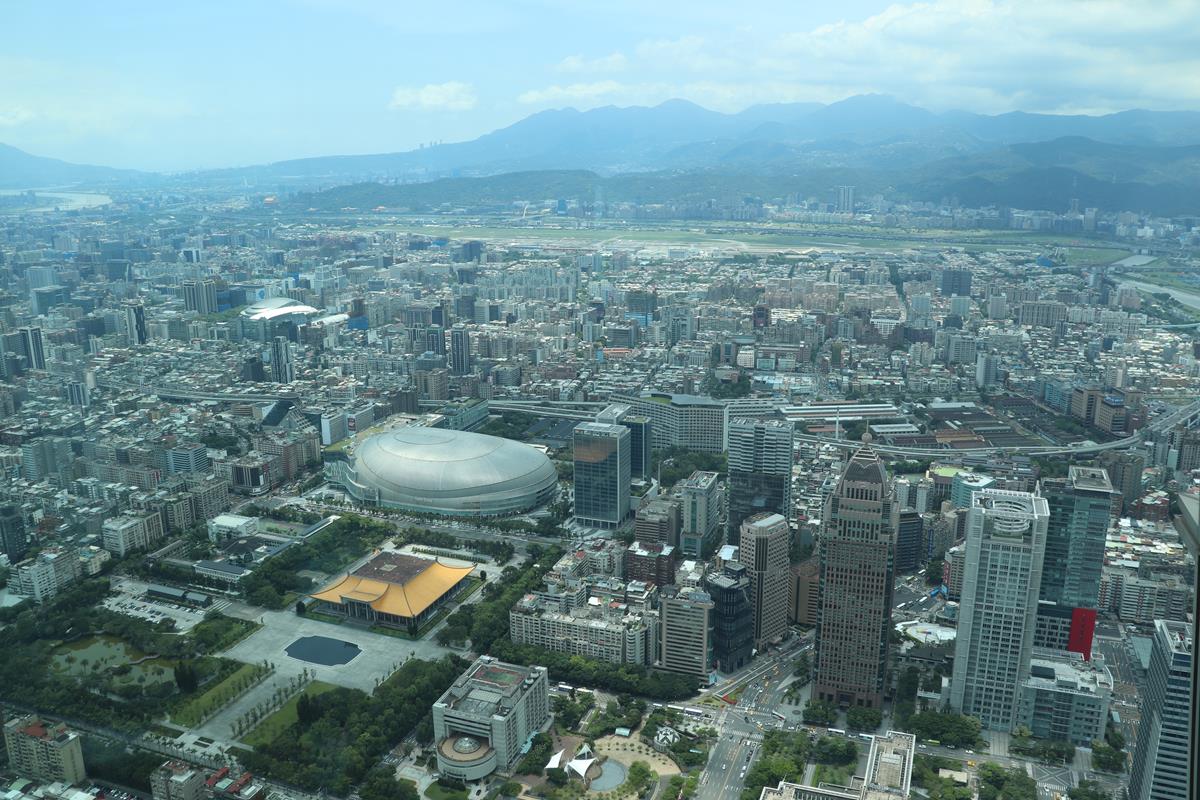
Installed with the World’s fastest elevator at the time, you will be taken up to floor 89 for 600 TND. Entry fees to go to floor 101 are required. Upon arriving at floor 89, you will find 360-degree views with multiple food and beverage vendors. Walking around, you will also see scores of photo opportunities with a garden-type feel everywhere. Entry to the observation deck is reached from floor five. You will find the most exclusive brands on the bottom five floors of the building.
National Theatre Hall
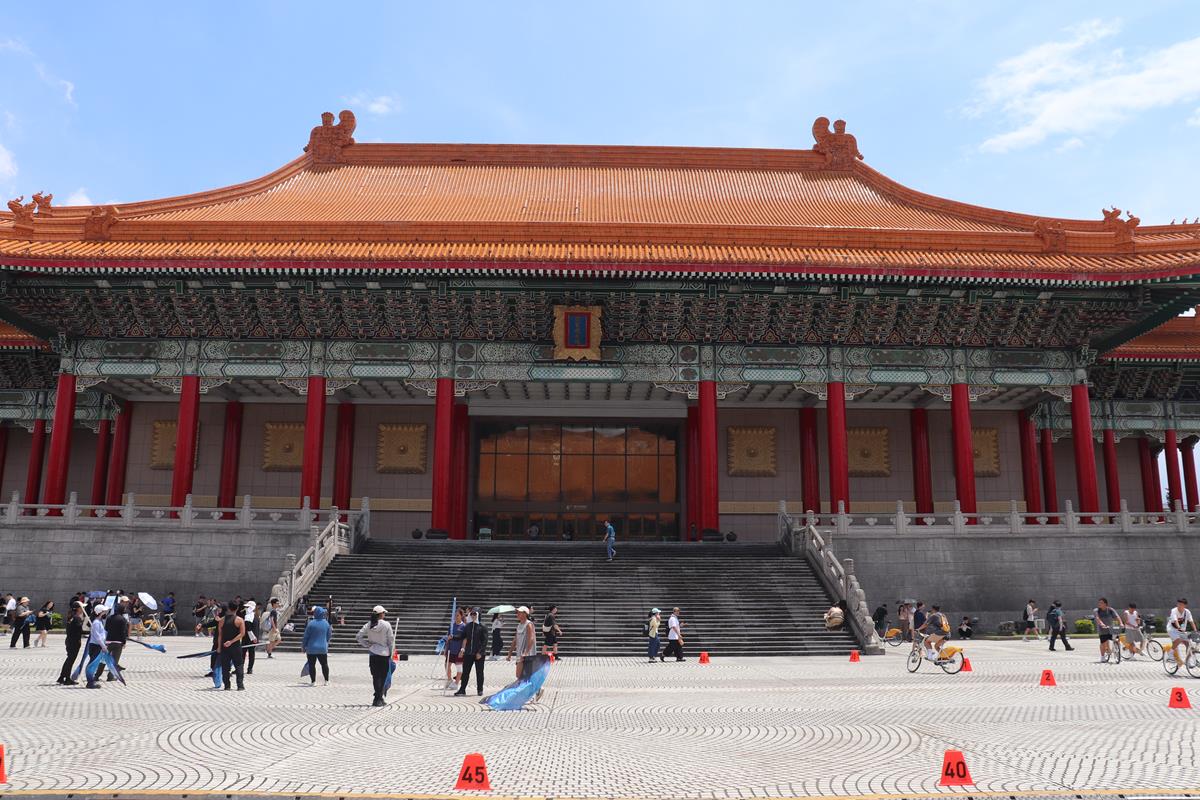
The stunning National Theatre Hall is next to the National Concert Hall, Chiang Kai-Shek Memorial Hall, and Liberty Arch Square.
National Concert Hall
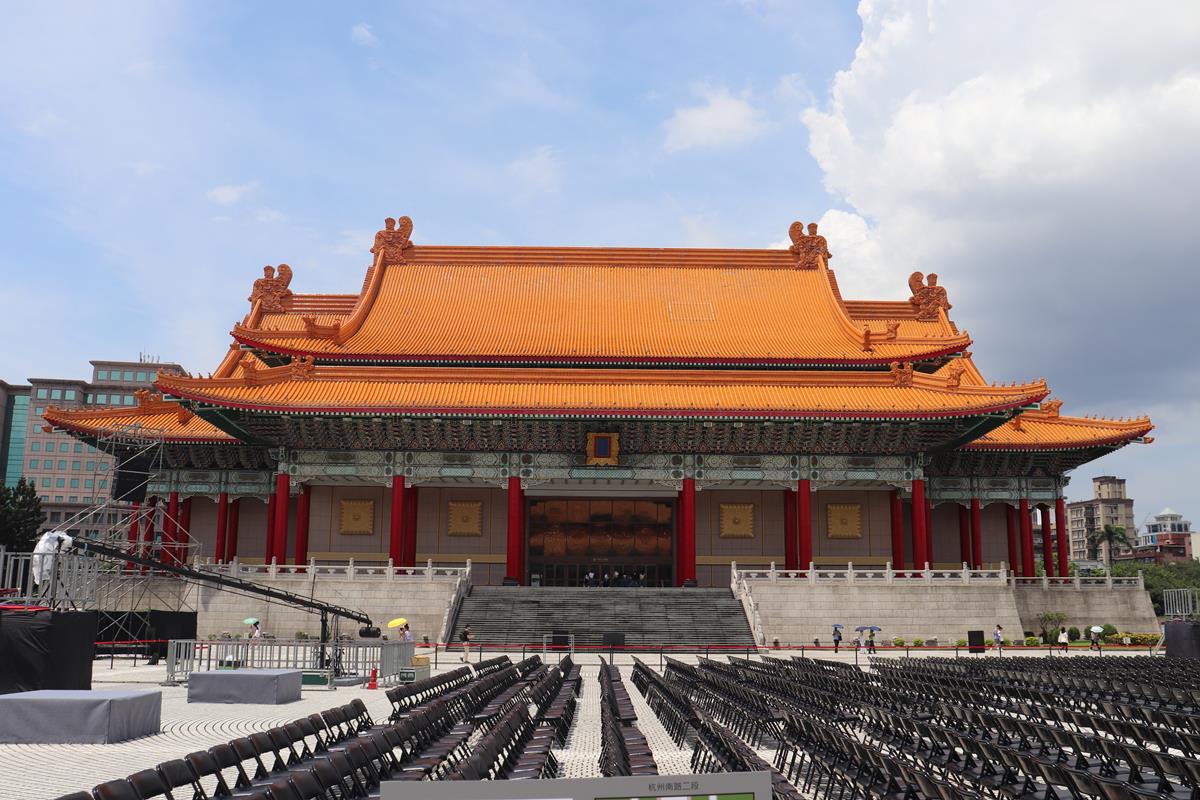
The National Concert Hall and the matching National Theatre Hall were built 1987 in traditional Chinese styling.
Chiang Kai-Shek Memorial Hall
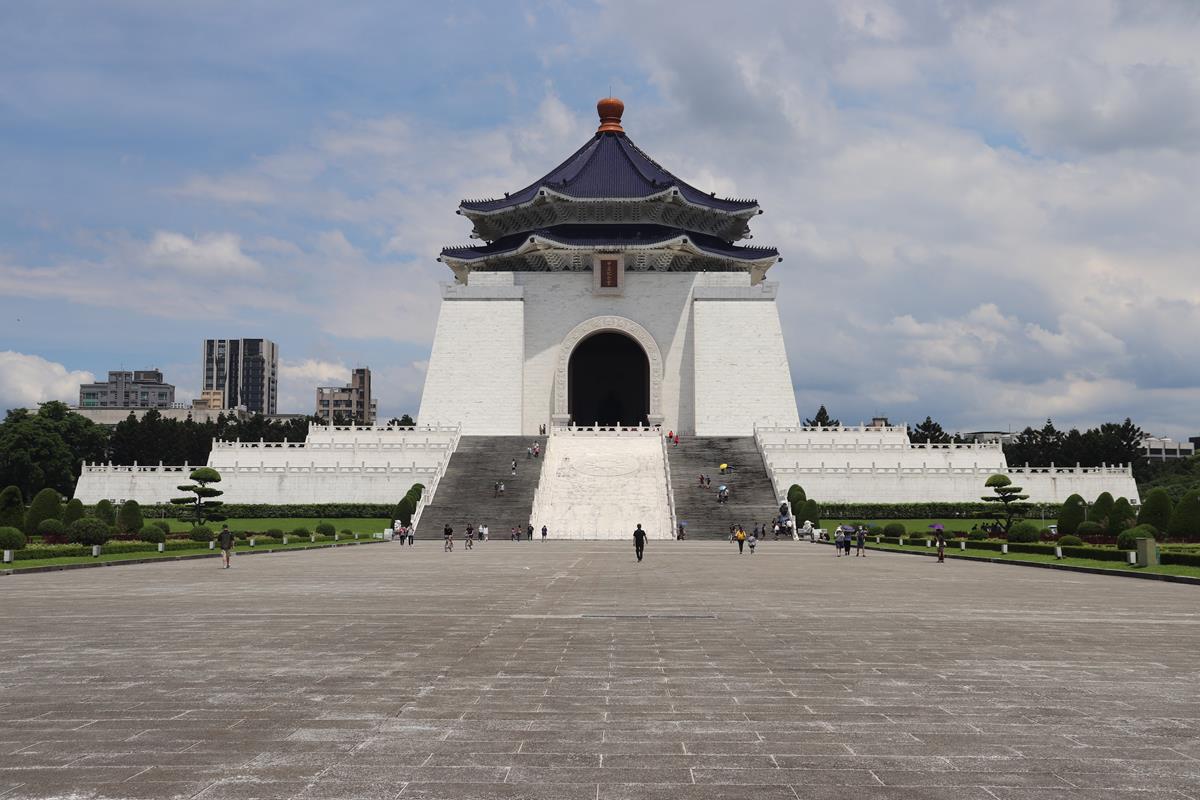
The hall was built upon what had been an army headquarters that was part of the largest military district in Taipei City. The blue and white colors used in the memorial hall are key colors in the national flag. The blue and white of the top of the memorial represent the blue sky and 12 rays of a white sun.
Liberty Square Arch
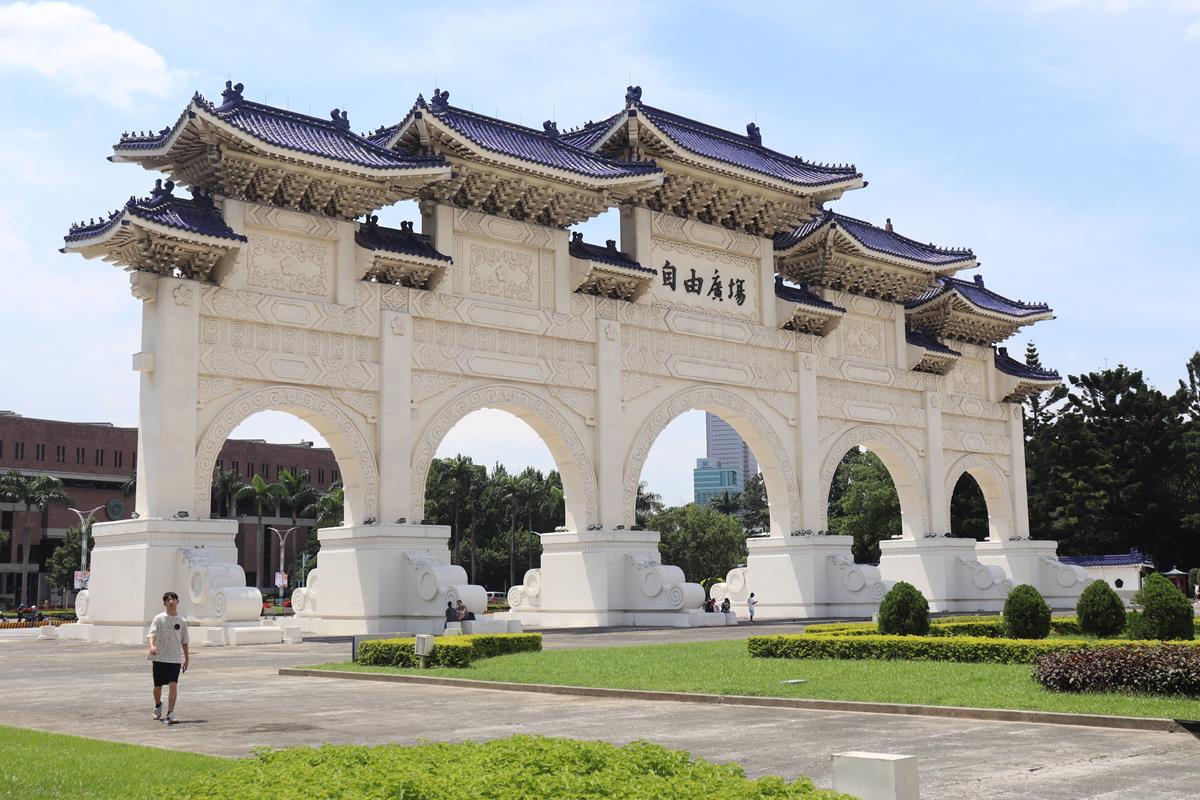
Liberty Square (also Freedom Square) is a public plaza covering over 240,000 square meters in the Zhongzheng District of Taipei, Taiwan. It has served as the city’s public gathering since its completion in the late 1970s. The square’s name recalls its crucial historical role in Taiwan’s transition from one-party rule to modern democracy in the 1990s.
Lungshan Temple
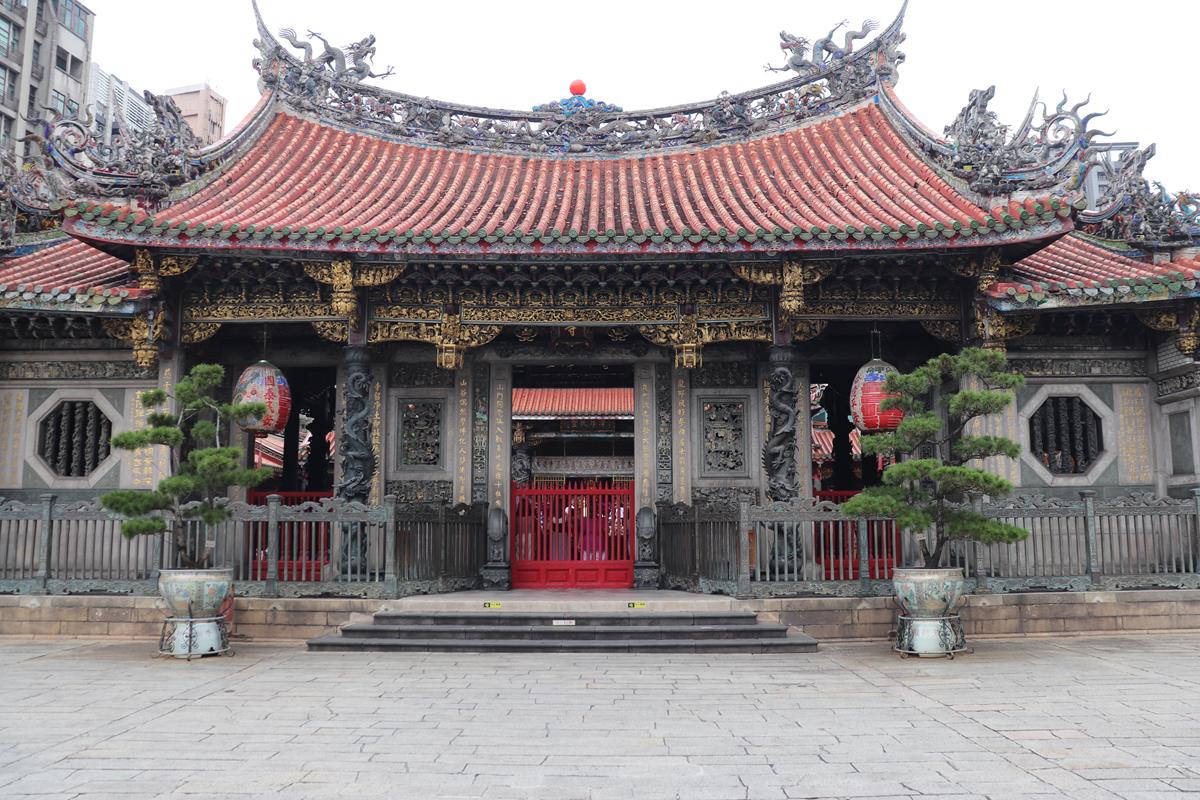
Lungshan Temple is a Chinese folk religious temple. The temple was built in Taipei in 1738 by settlers from Fujian during Qing rule in honor of Guanyin. It served as a place of worship and gathering for the Chinese settlers. In addition to its Chinese Buddhist elements, it includes halls and altars to Chinese folk deities such as Mazu and Guan Yu.
National History Museum
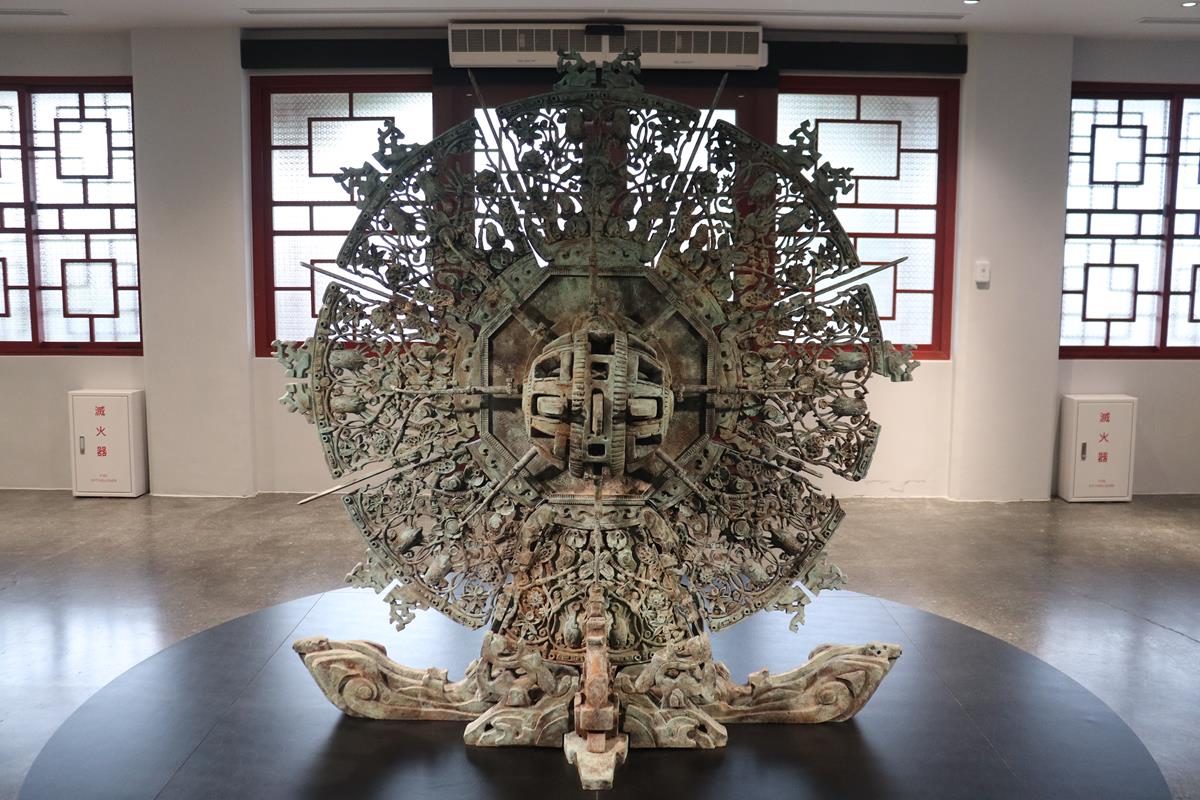
The museum was established in a Japanese-style building near the Taipei Botanical Garden in 1955. It was renamed the “National Museum of History” in 1956, and the building was renovated in a five-floor traditional Chinese Ming and Qing palace style. It is open every day, except Mondays, from 10 am to 6 pm. The entry fee is TND 80.
Xingtian Temple
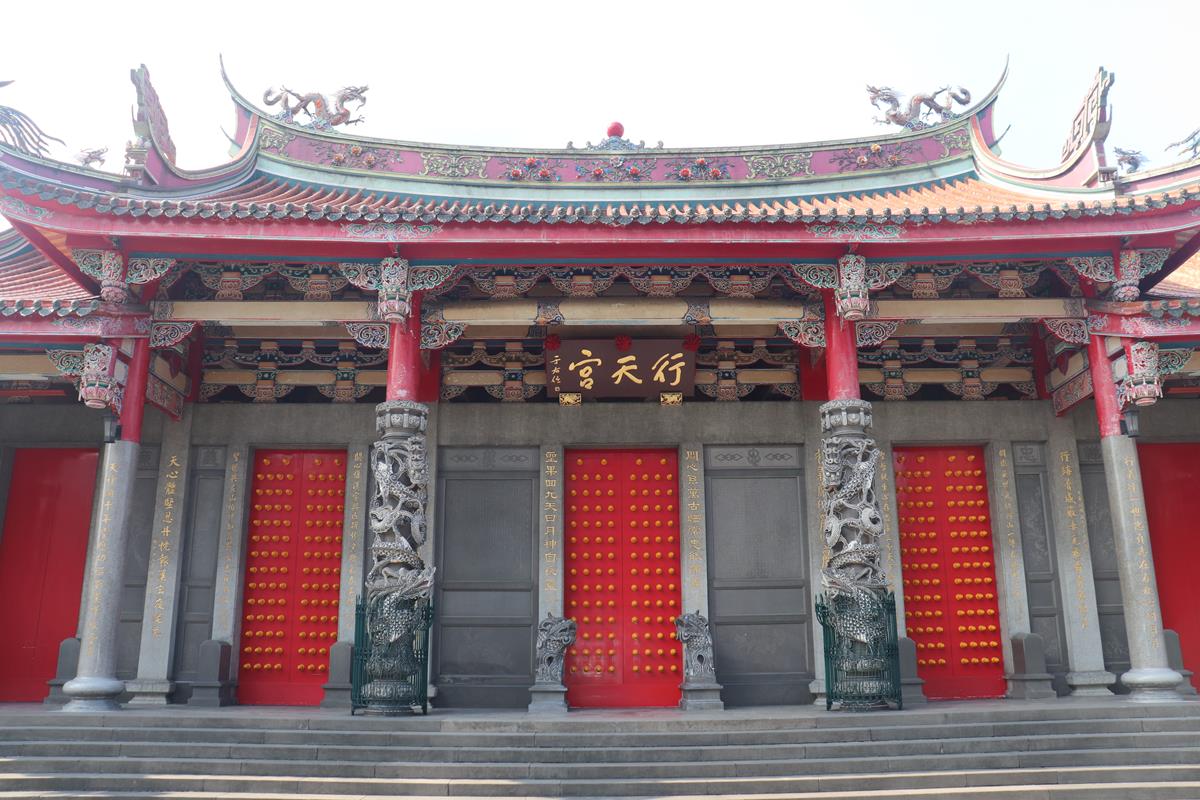
This temple is devoted to Lord Guan, the Patron Deity of businessmen, military personnel, and policemen. Dragon sculptures feature prominently in its design. It covers over 7,000 square meters and was constructed in 1967. In 2014, to reduce particle air pollution, the temple became the first in Taiwan to ban incense burning.
Dalongdong Baoan Temple
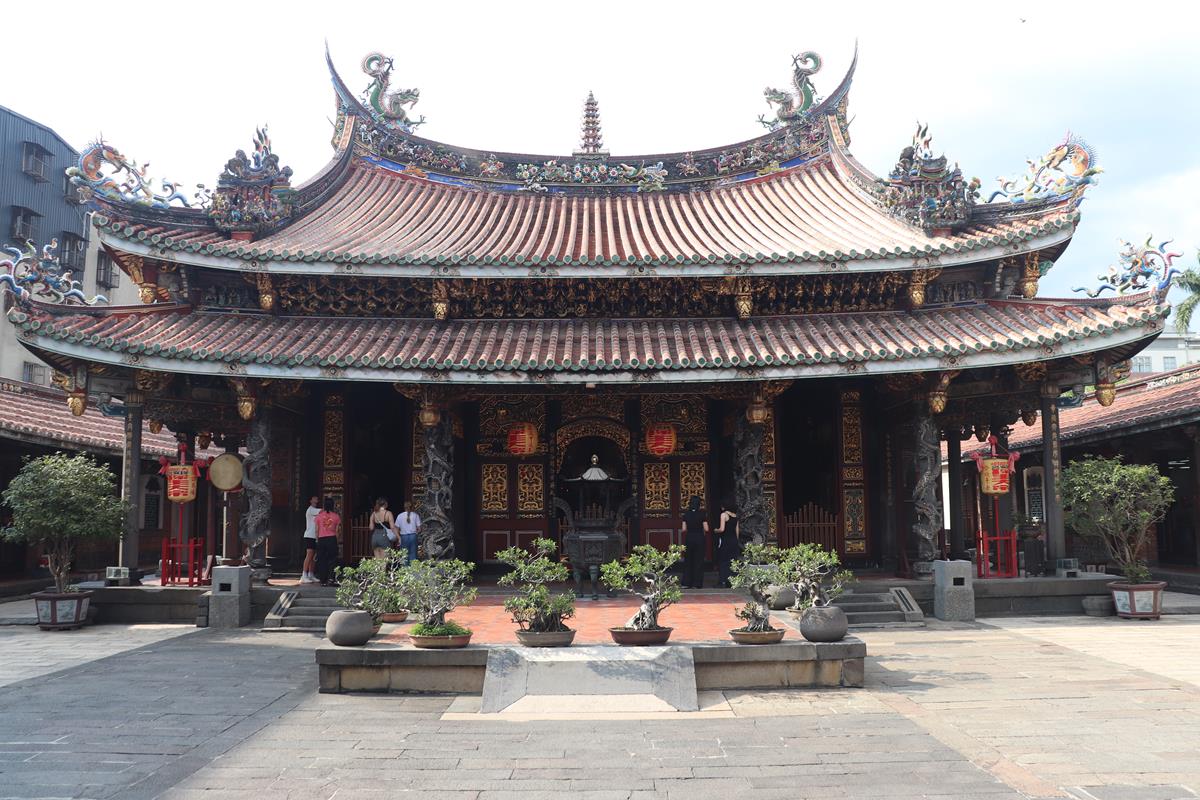
The temple was initially built by Tong’an, Xiamen, and Fujian clan members, who immigrated to Taipei in the early 19th century and named Po-an to “protect those of Tong’an.” The temple construction commenced in 1804 and replaced a previously existing wooden shrine from 1742 in Toaliongtong. Throughout the 20th century during the Japanese period, the temple underwent numerous improvements and extensions, which resulted in the present temple grounds. After years of neglect and abuse, in 1995, the temple was the focus of repairs and renovations. In 2003, the temple was inducted into the UNESCO Asia-Pacific Heritage Awards for Culture Heritage Conservation.
National Revolutionary Martyrs’ Shrine
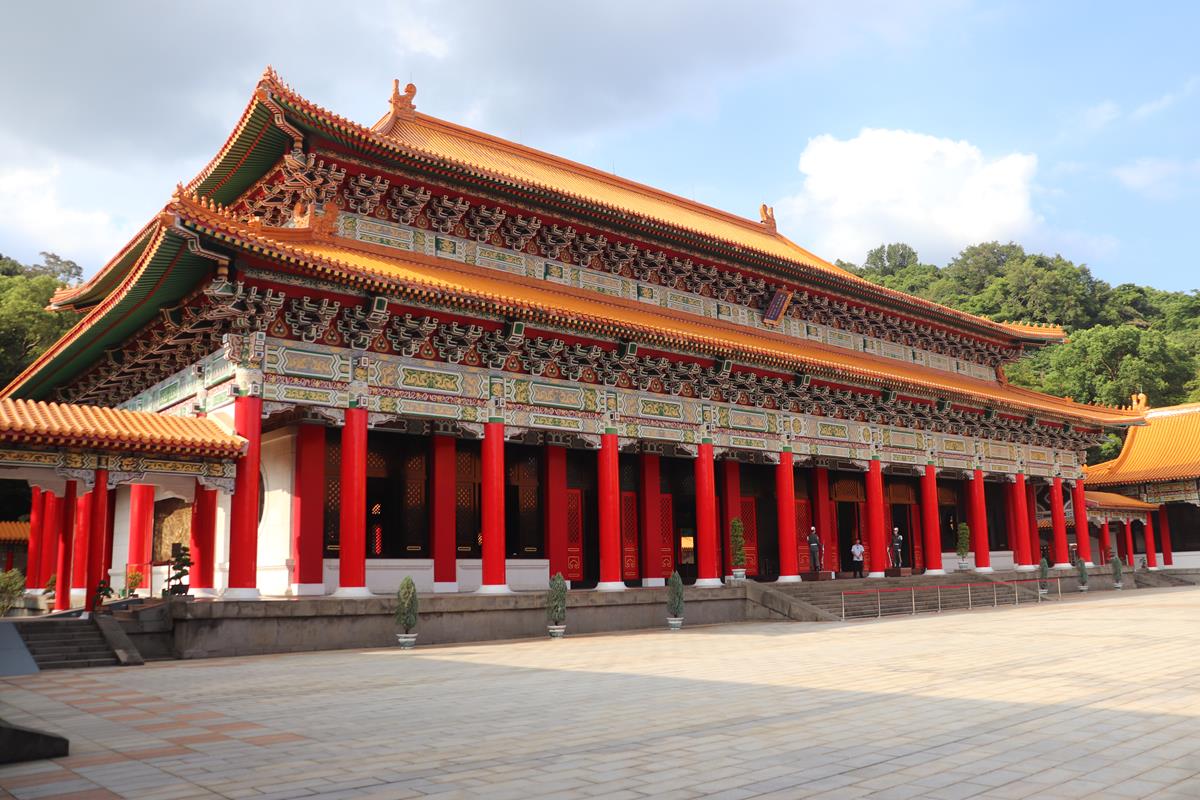
This shrine was built on Chingshan Mountain and oversees the Keelung River in Taipei’s Zhongshan District. The structure houses the spirit tablets of about 390,000 persons killed, among other engagements, during the Xinhai Revolution, Northern Expedition, Second Sino-Japanese War, Chinese Civil War, and the First and Second Taiwan Strait Crises. The shrine also hosts a changing of the honor guard from the various branches of the Republic of China Military, similar to the Sun Yat-sen Memorial Hall and Chiang Kai-shek Memorial Hall rituals.
Shilin Night Market
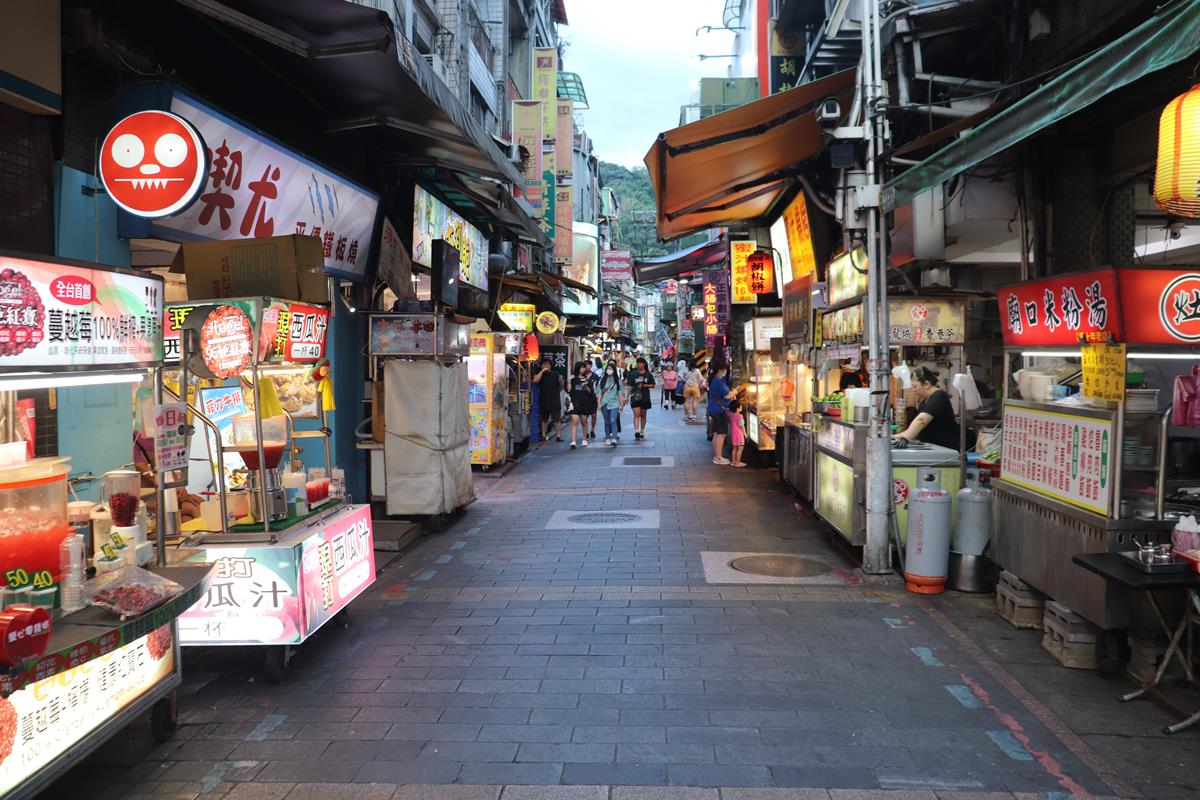
Shilin Night Market is one of the largest night markets in Taipei. Many prosperous shops on Wenlin Road, Dadong Road, Danan Road, etc form it. Shilin Market was built as early as 1899 and is famous for various snacks and eateries. Many visitors come to Shilin Night Market to enjoy delicious foods such as large pancakes, enfolding small pancakes, hot pot on stone, or Shilin sausage. Shilin Night Market has become a renowned place for great food.
Ningxia Night Market
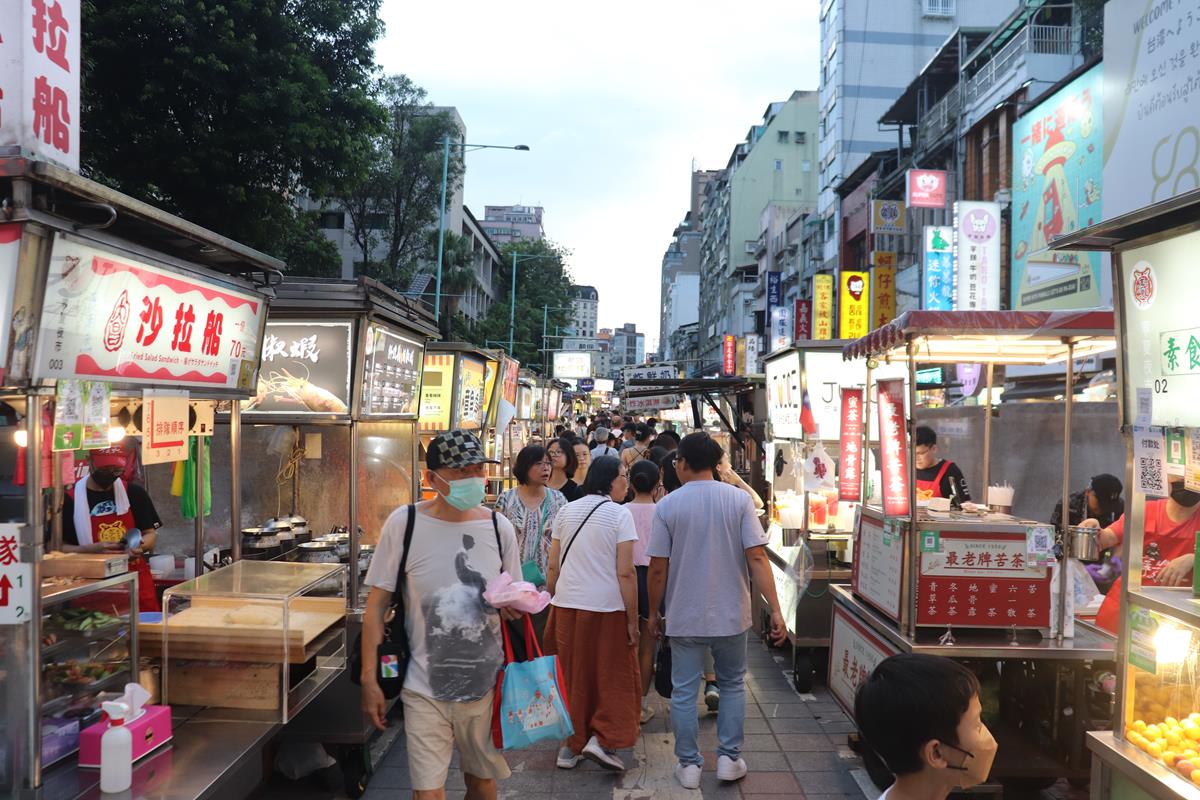
Conveniently only five minutes from my hotel, this famous night street market has around fifty food stalls and around the same number of game/gambling stalls. It is easy to see which stalls are the most popular, as you will find long lines behind them. The sizeable deep-fried squid stalls are the most popular. You will find various small restaurants off the street, including teppanyaki options.
Qingtiangang Mountain Lava Plateau and Grassland
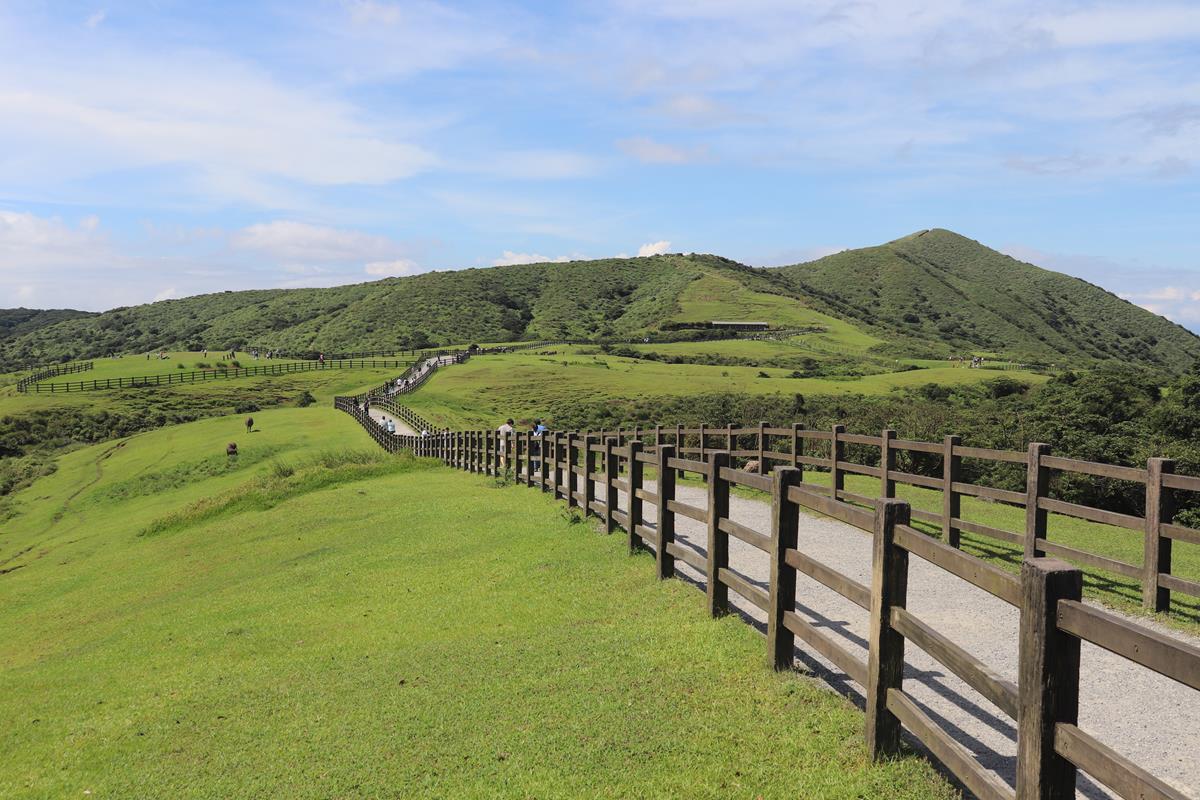
Qingtiangang is a vast lava terrace formed when the lava flowed north after the eruption. The terrace was once a ranch for water buffaloes grazing during Japanese colonization; even today, you can still see the naturally bred water buffaloes there.
Xiaoyoukeng Volcano Crater
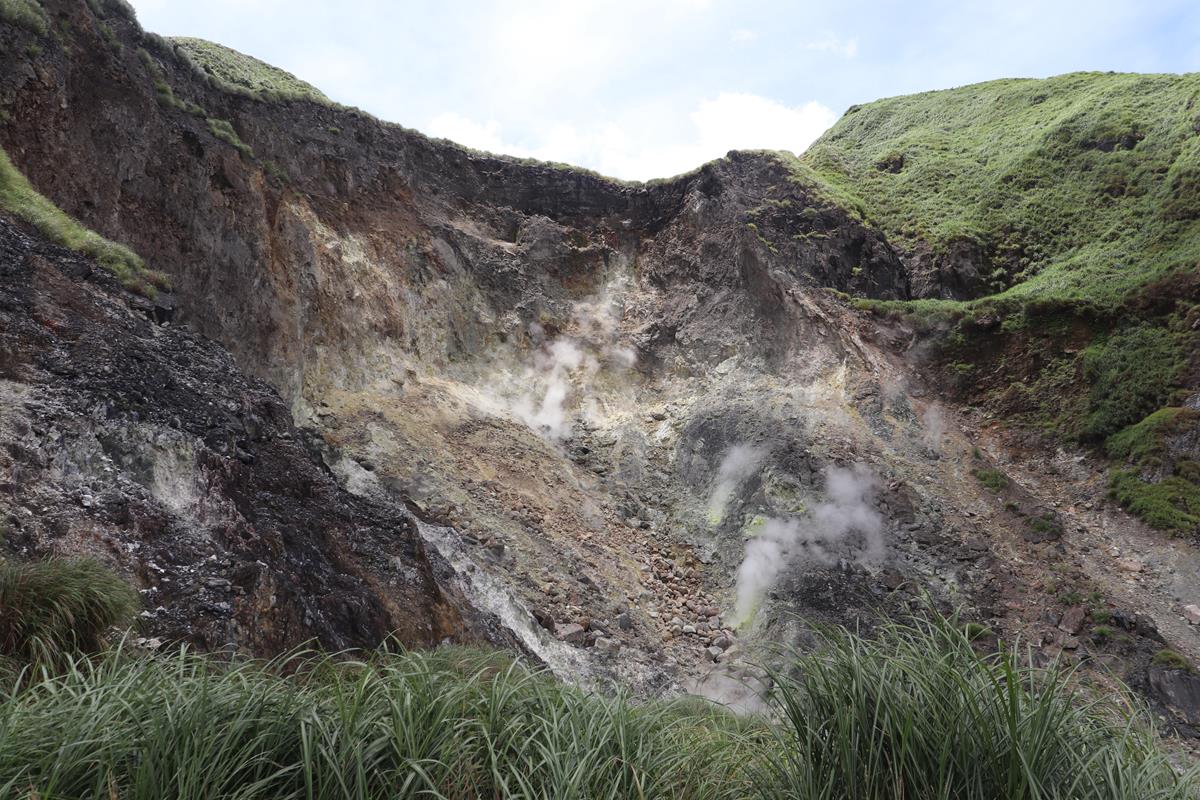
The most popular attraction in Yangmingshan National Park is Xiaoyoukeng, which means “little oil pit,” a post-volcanic geological landscape area. The scenic trail around Xiaoyoukeng offers close-up views of the pit from different angles. You can see and smell the steam from the cracks and the sulfur crystals.
Yangmingshuwu Mansion (Xinhai Guangfu Hall)
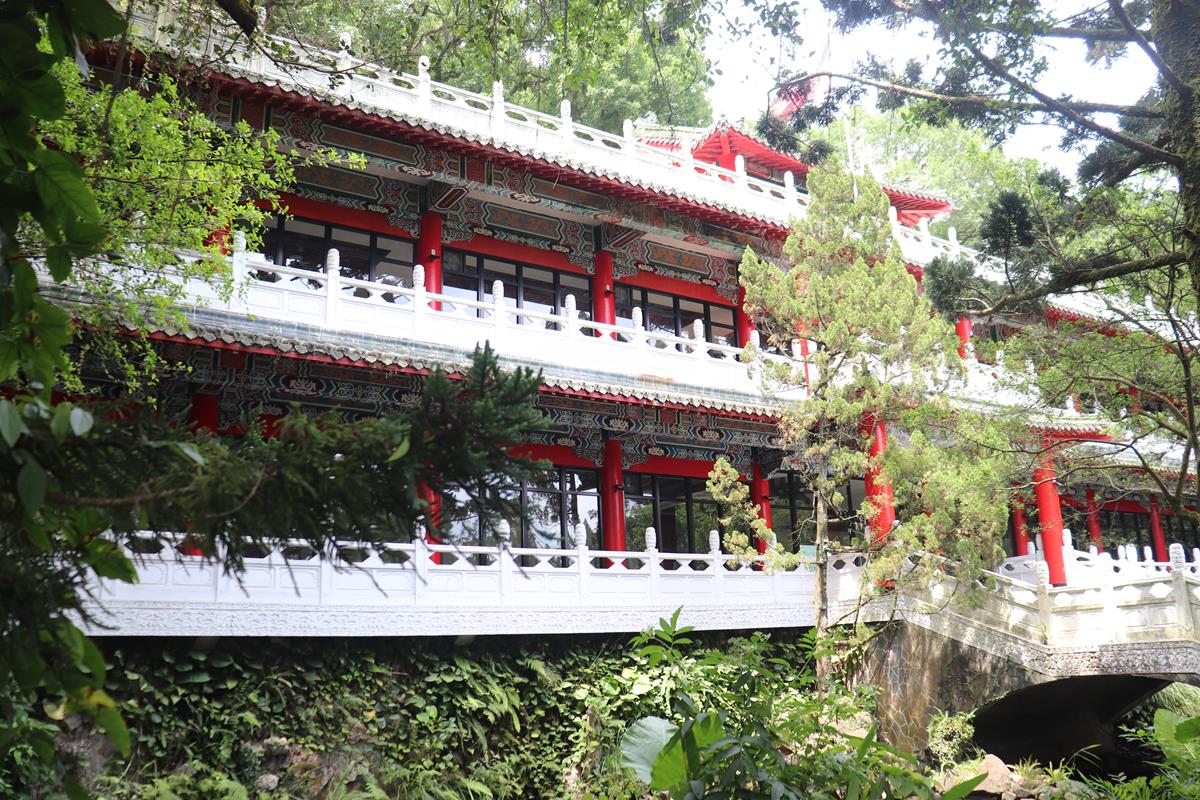
This stunning building was previously used as the summer residence of the late President Chiang Kai-shek for the reception of critical foreign dignitaries. This place was originally an old-growth forest; after the mansion and associated buildings were completed, part of the forest was still preserved. Today, the mansion has become an essential site for Taiwan’s history and nature conservation.
Statue of Wang Yangming
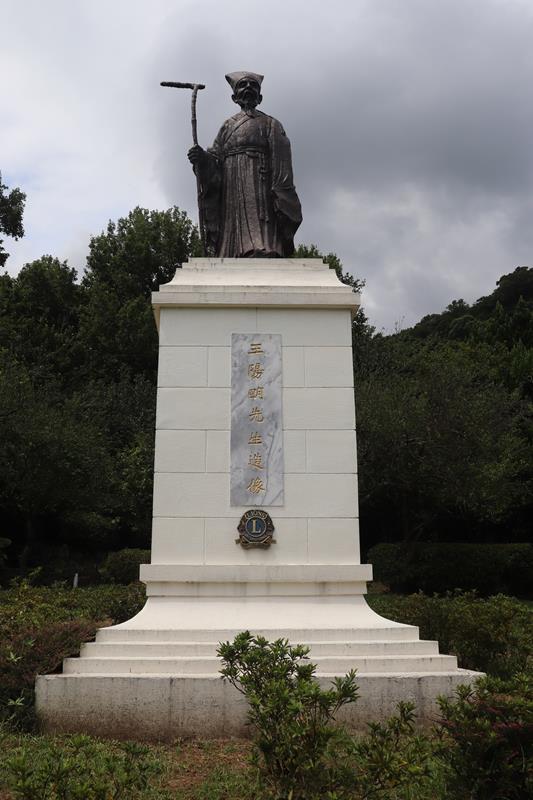
Wang became a victorious general and was known for the strict discipline he imposed on his troops. In 1517 and 1518, he was dispatched in response to petitions to suppress peasant revolts in Jiangxi, Fujian, and Guangdong. Concerned with the destruction that came with war, he petitioned the court to allow amnesty and successfully destroyed rebel military forces.
Lengshuikeng Sulfur Spring Valley and Hotspring Foot Baths
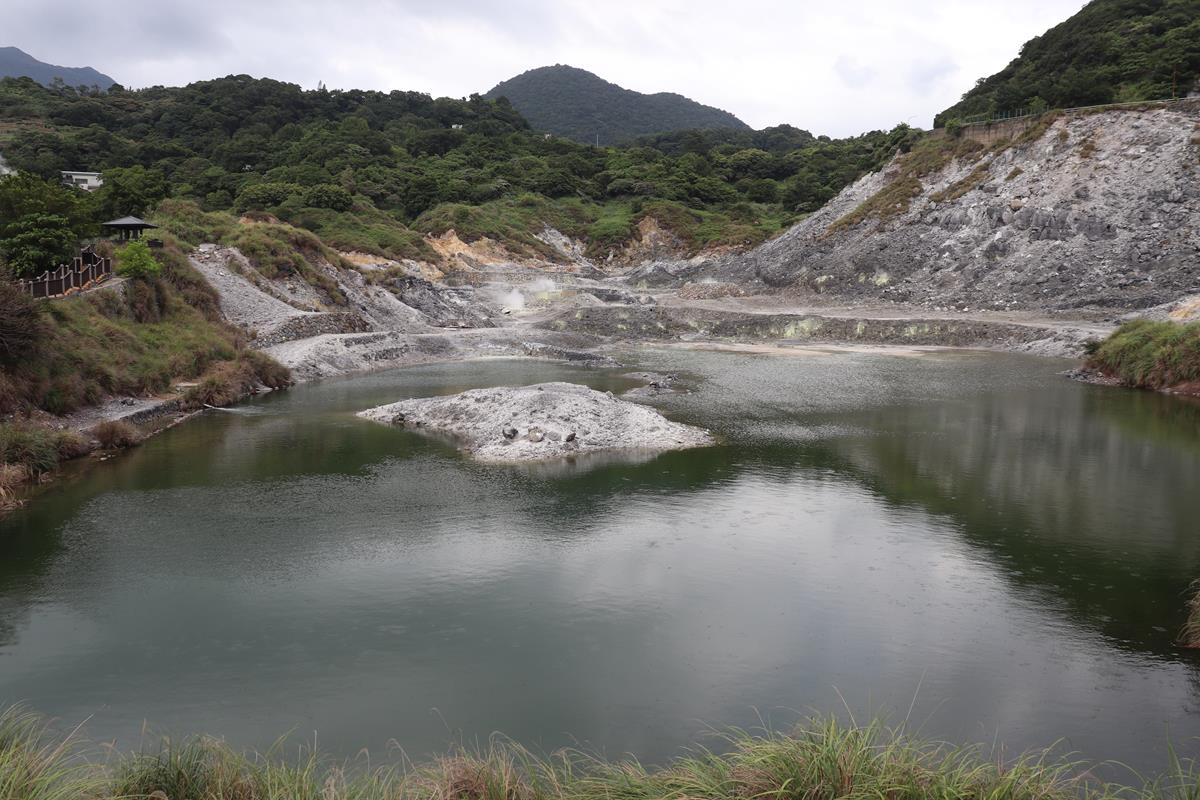
Lengshuikeng (literally “cold water pit”) is a barrier lake formed by the volcanic lava flowing down from the mountain. The hot spring water is colder than the other areas (around 40 degrees Celsius), hence the name. Enjoy a rejuvenating hot spring foot bath to relieve the tension and stiffness in your legs.
Beitou Geothermal Valley
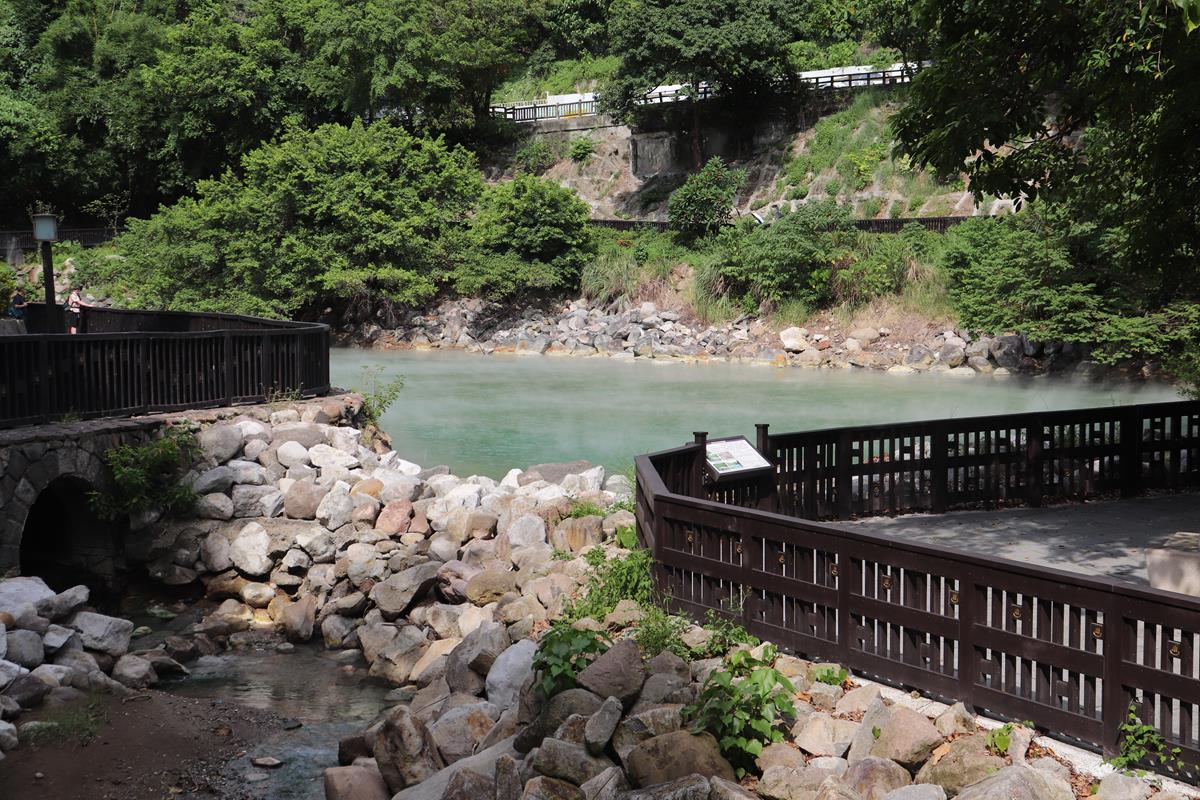
The Beitou Geothermal Valley is near the Beitou Hot Spring Museum. This place is also called “Hell Valley” or “Ghost Lake” because of the sulfuric steam fog it emits due to its high temperature. It is also one of the sulfur spring heat sources that supply the hot springs in its vicinity.
Beitou Hot Spring Museum
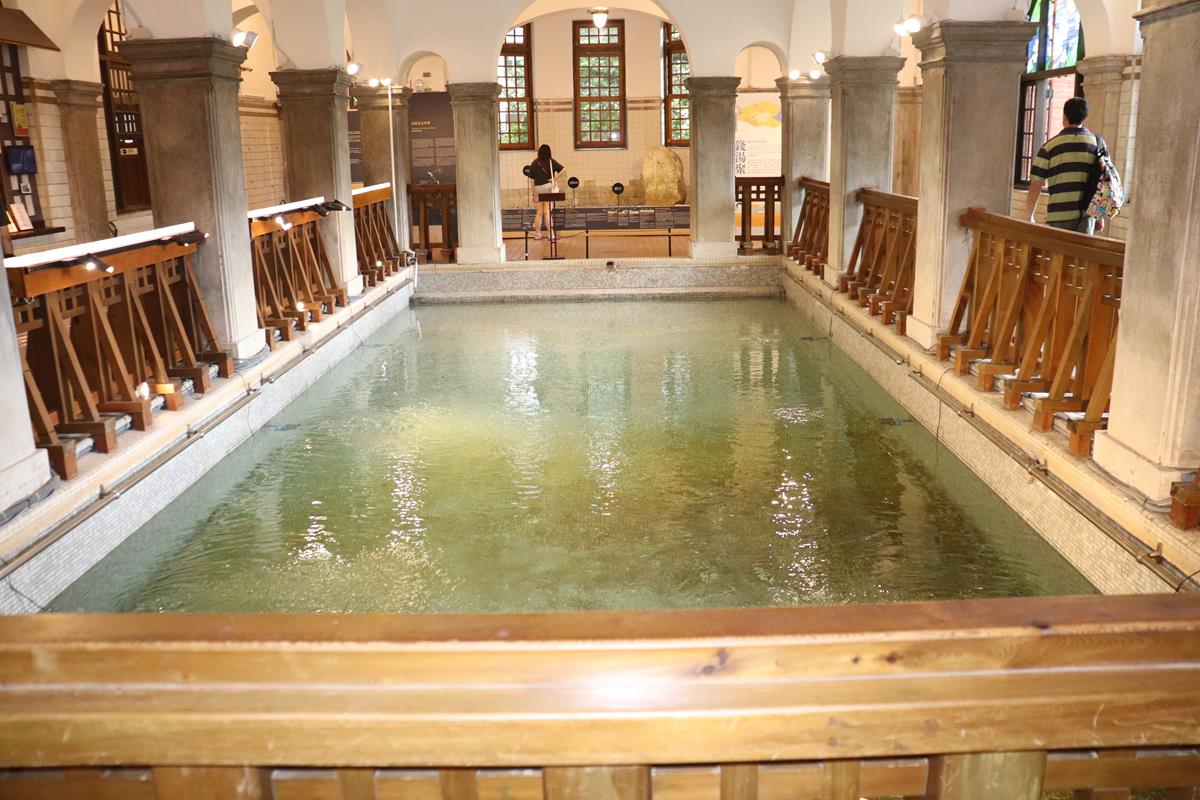
The Hot Spring Museum was built during the Japanese colonization and is only a few minutes’ walking distance from the Taipei Public Library Beitou Branch. The museum’s two-story Tudor-style building has a brick-and-wood facade and black tile roof. The first level consists of a small and large bath; as you walk along the arcade, you can see the baths up close. Additionally, the display of “sento” simulates the facilities of a traditional public bath, where you can understand how the communal bathhouse worked in the past. The second level consists of a vast Tatami lobby and a balcony with a particular exhibition area displaying early Taiwanese film documents. This is an excellent place to learn about Beitou’s rich hot spring culture and history.
The Famous Beitou Public Library
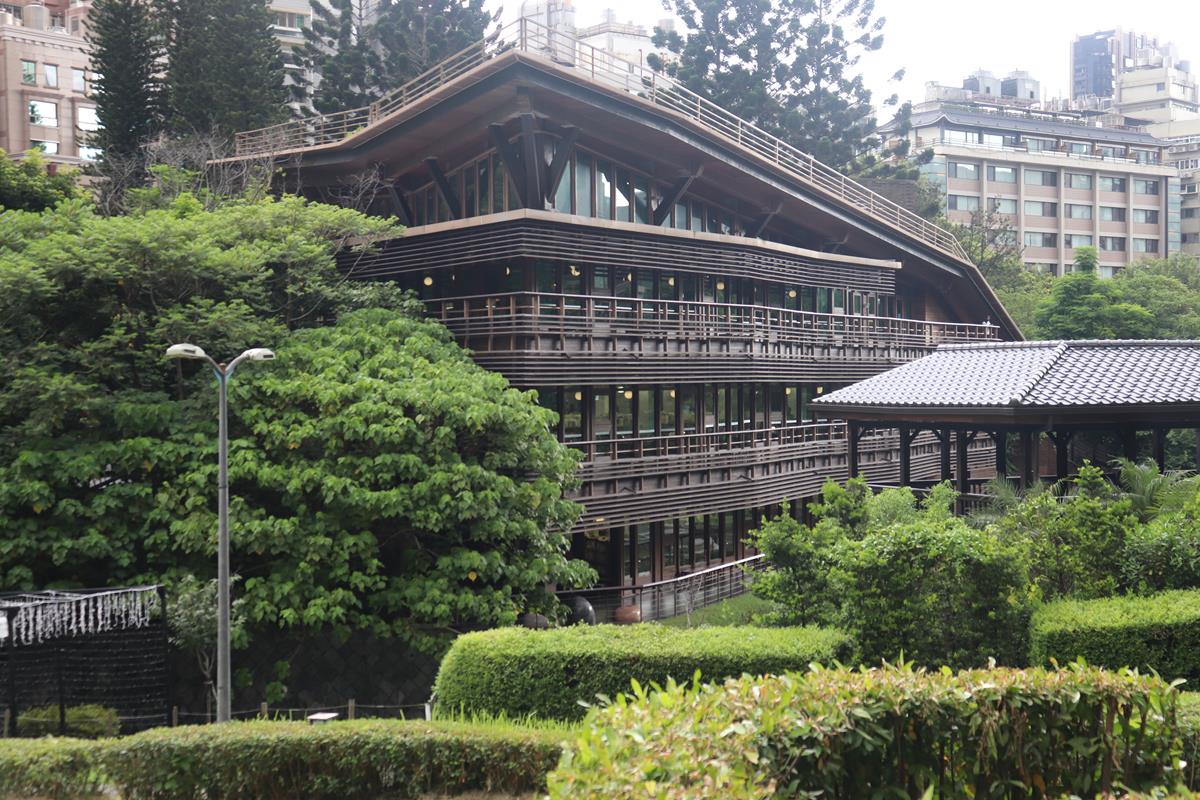
Because of its sustainable design, the famous travel website When on Earth selected this beautiful library as one of the 10 Coolest Examples of Green Buildings. The New York City-based online culture magazine Flavorwire recognized it as one of the World’s 25 Most Beautiful Public Libraries.
Yehliu Geopark
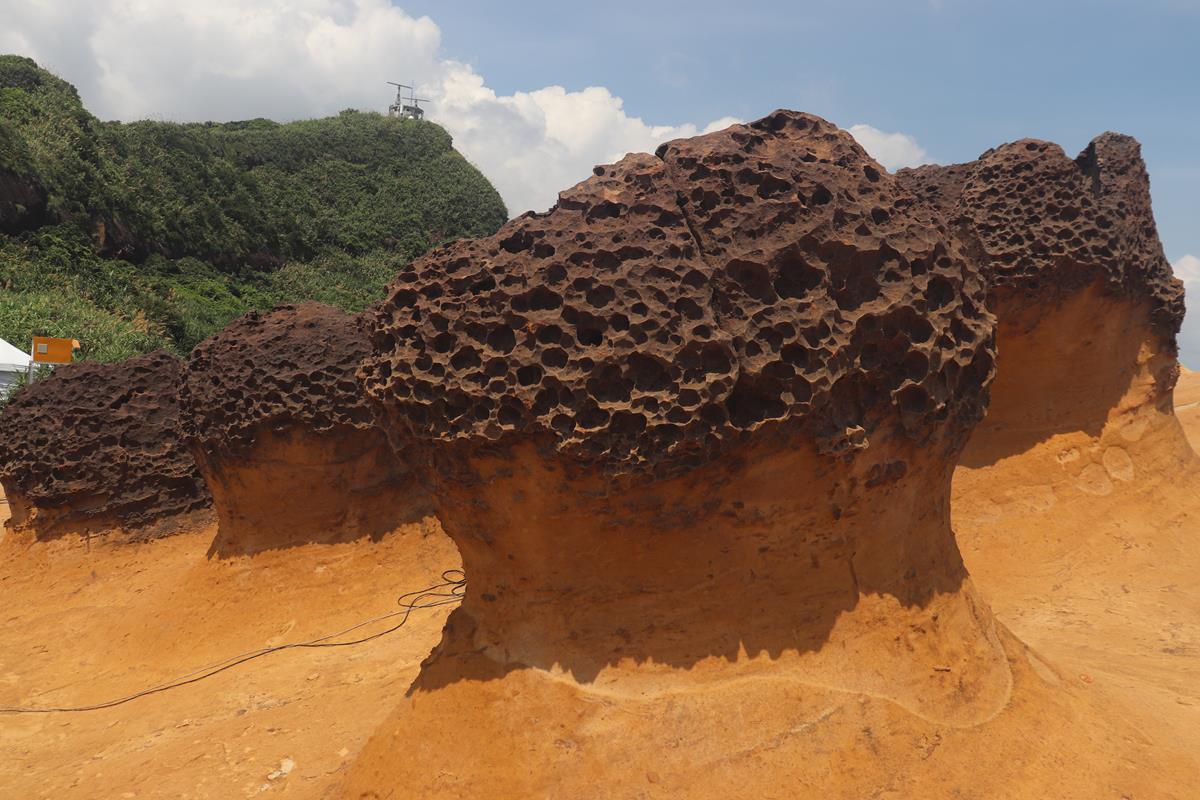
As one of the premier attractions on the northern coast of Taiwan, Yehliu Geopark is home to several unique rock formations caused by wind and sea, such as the mushroom rocks, the chessboard rock, the trace fossils, and all that. The most famous rock formation is the iconic “Queen’s Head,” a mushroom rock resembling England’s Queen Elizabeth profile. Besides the Queen’s Head, other remarkable formations, such as the Sea Candles, the Fairy Shoe, the Ginger Rocks, the Elephant Rock, the Ice Cream Rock, the Kissing Rock, and the Princess’ Head, are worth looking at.
Jiufen Old Street
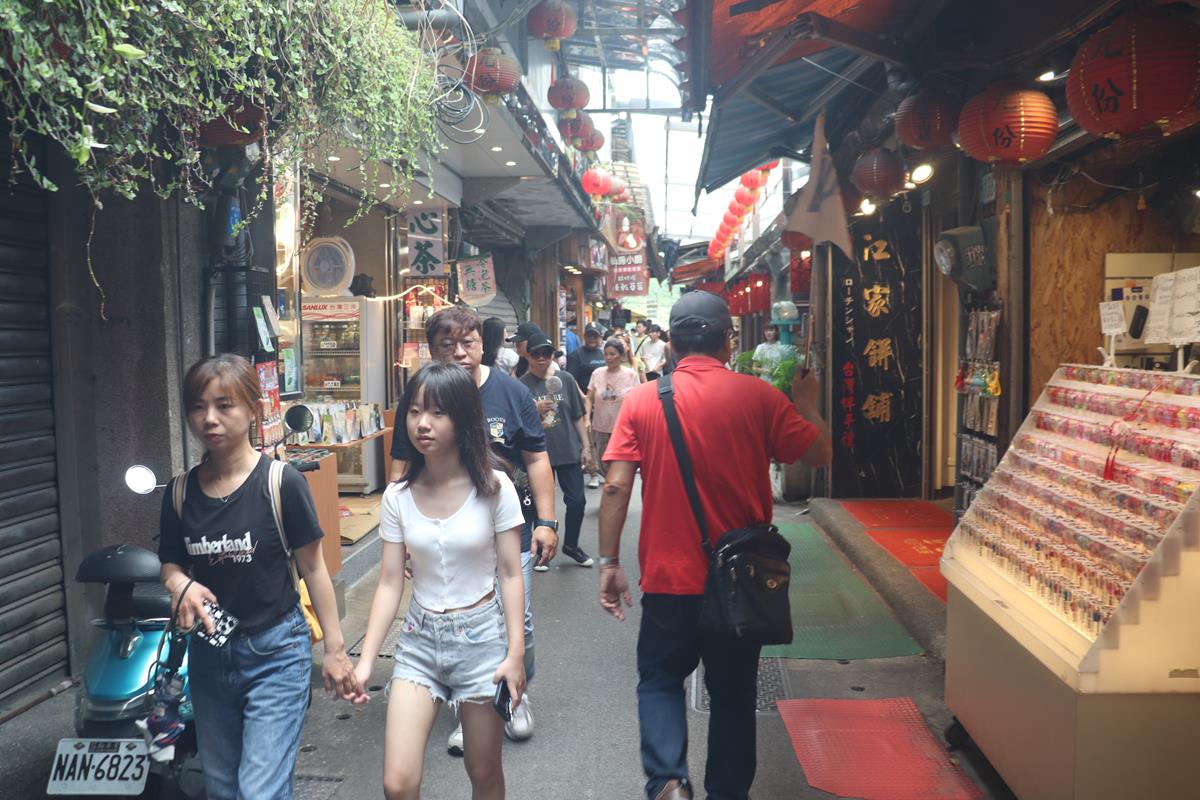
Jiufen is a hillside village in Ruifang District, New Taipei City. The village flourished in the 1940s due to the gold mining industry but fell into disrepair for years. Even though the golden age has long gone, this small village still has many stories to tell. Expect large crowds every day of the year, with many souvenir shops, restaurants, tea and coffee vendors, and snack shops to browse.
Shifen Old Street
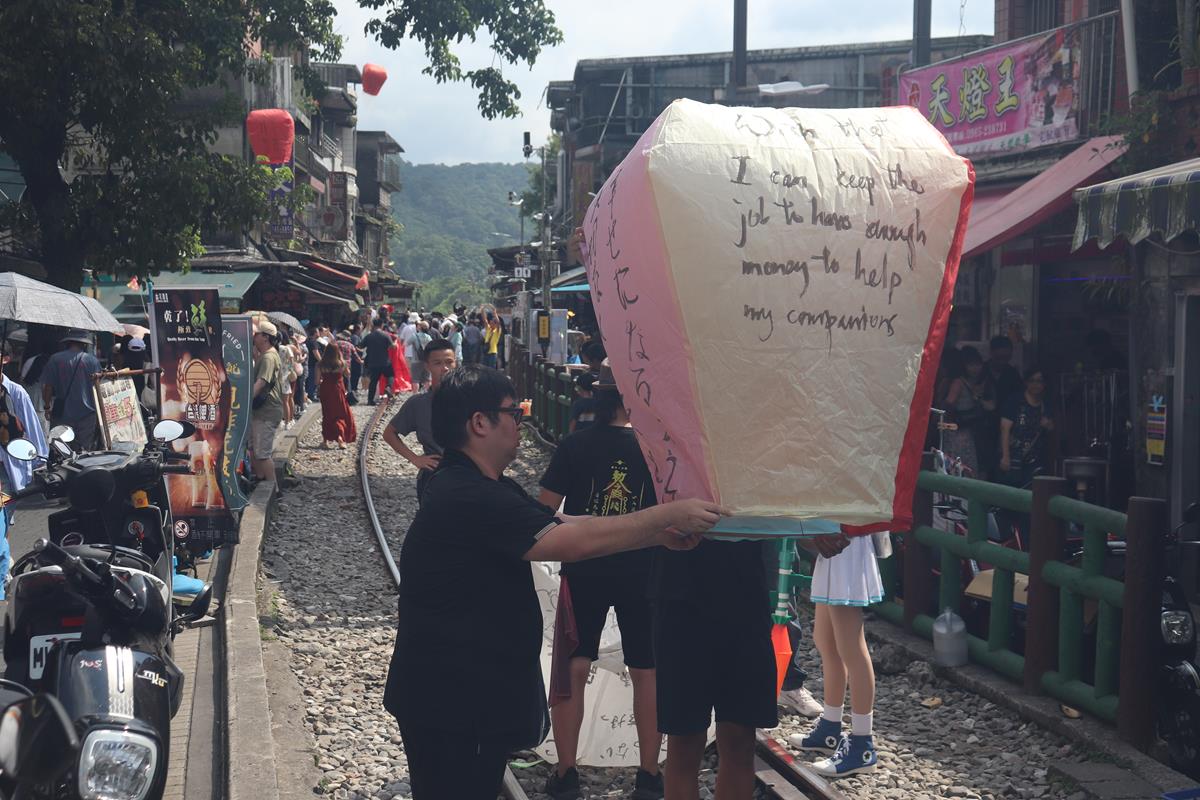
Shifen Railway Station is located down the Keelung River from the waterfall area. It was originally built for transporting coal during Japanese colonization. The station is right alongside Shifen Old Street, which today stands as a reminder of Taiwan’s history. The street has souvenir shops, sky lantern shops, and eateries.
Shifen Waterfall
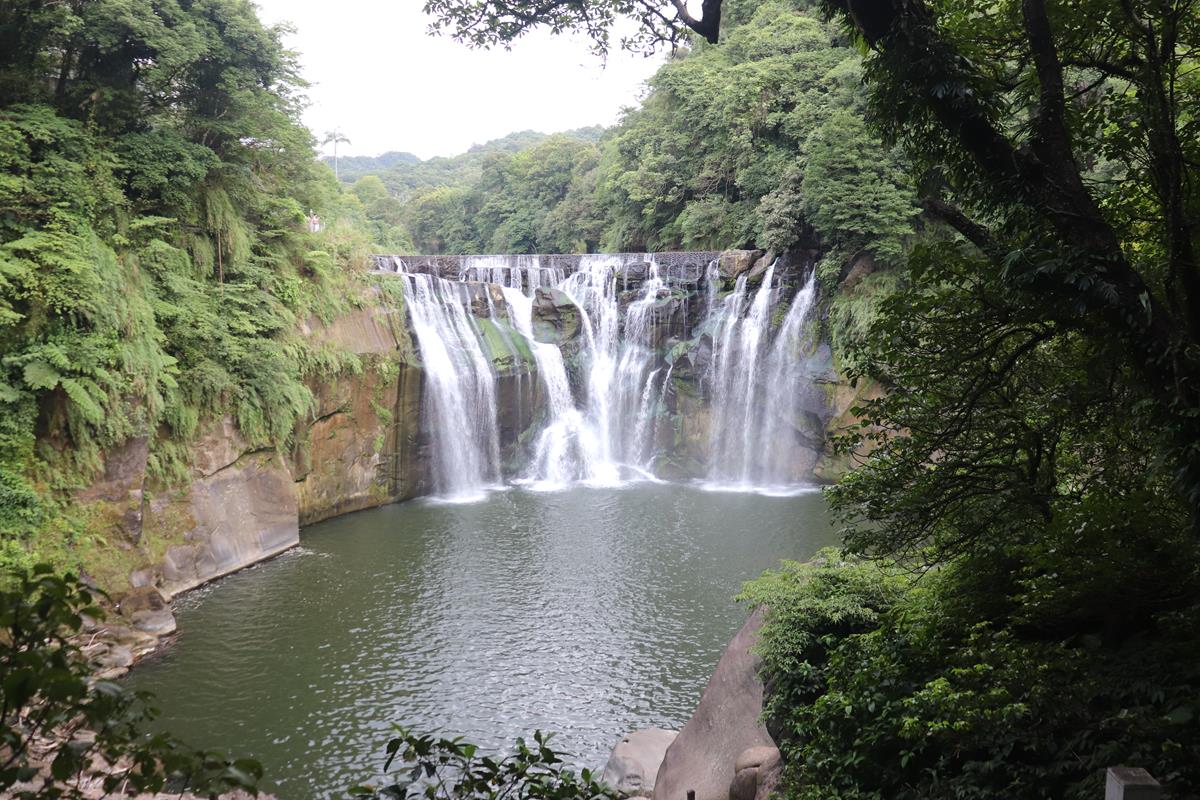
Situated in Pingxi District, Shifen Waterfall is one of the most popular attractions in this area. It is widely known as the “Little Niagara Falls” of Taiwan, a cascade-type waterfall similar to North America’s Niagara Falls. There are several viewing platforms near Shifen Waterfall, where visitors can see the waterfall from different angles and even have a close-up look. Be sure to check out the 4K drone footage I took here:

